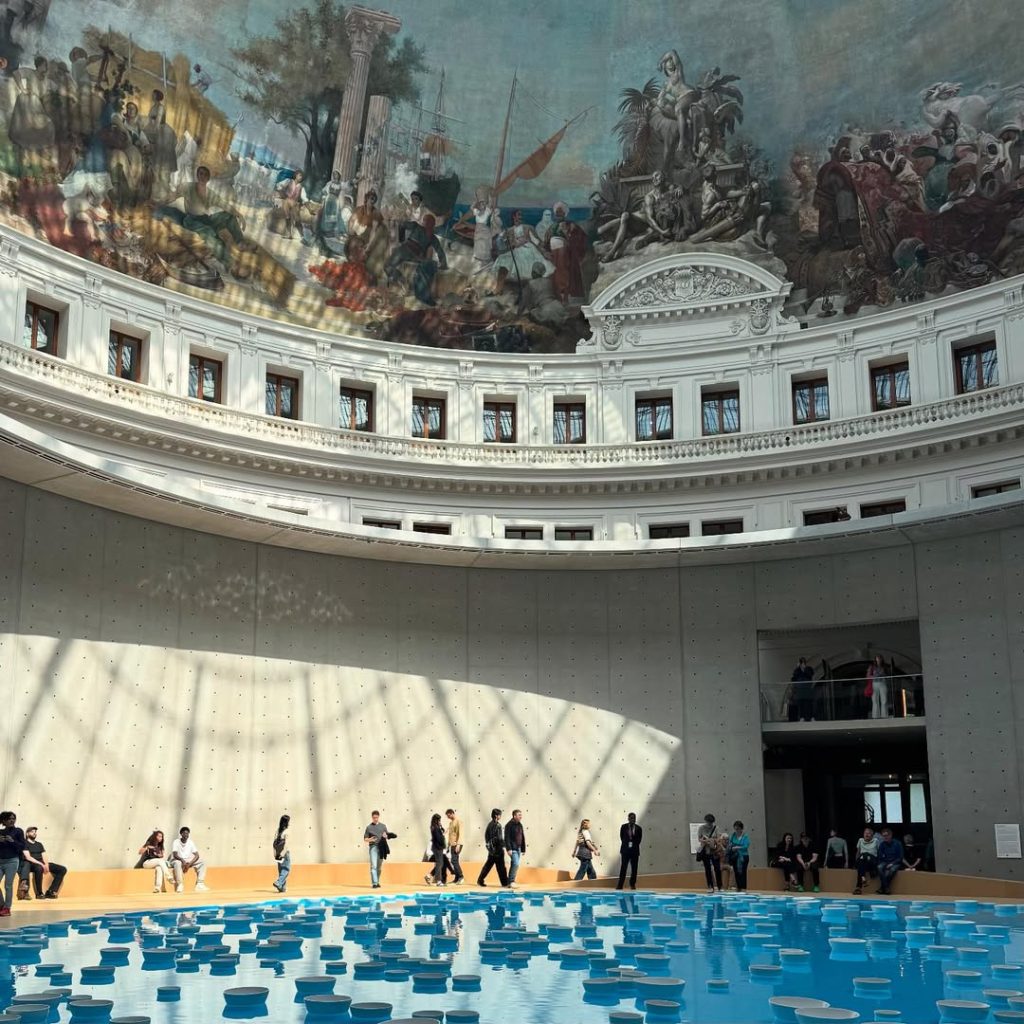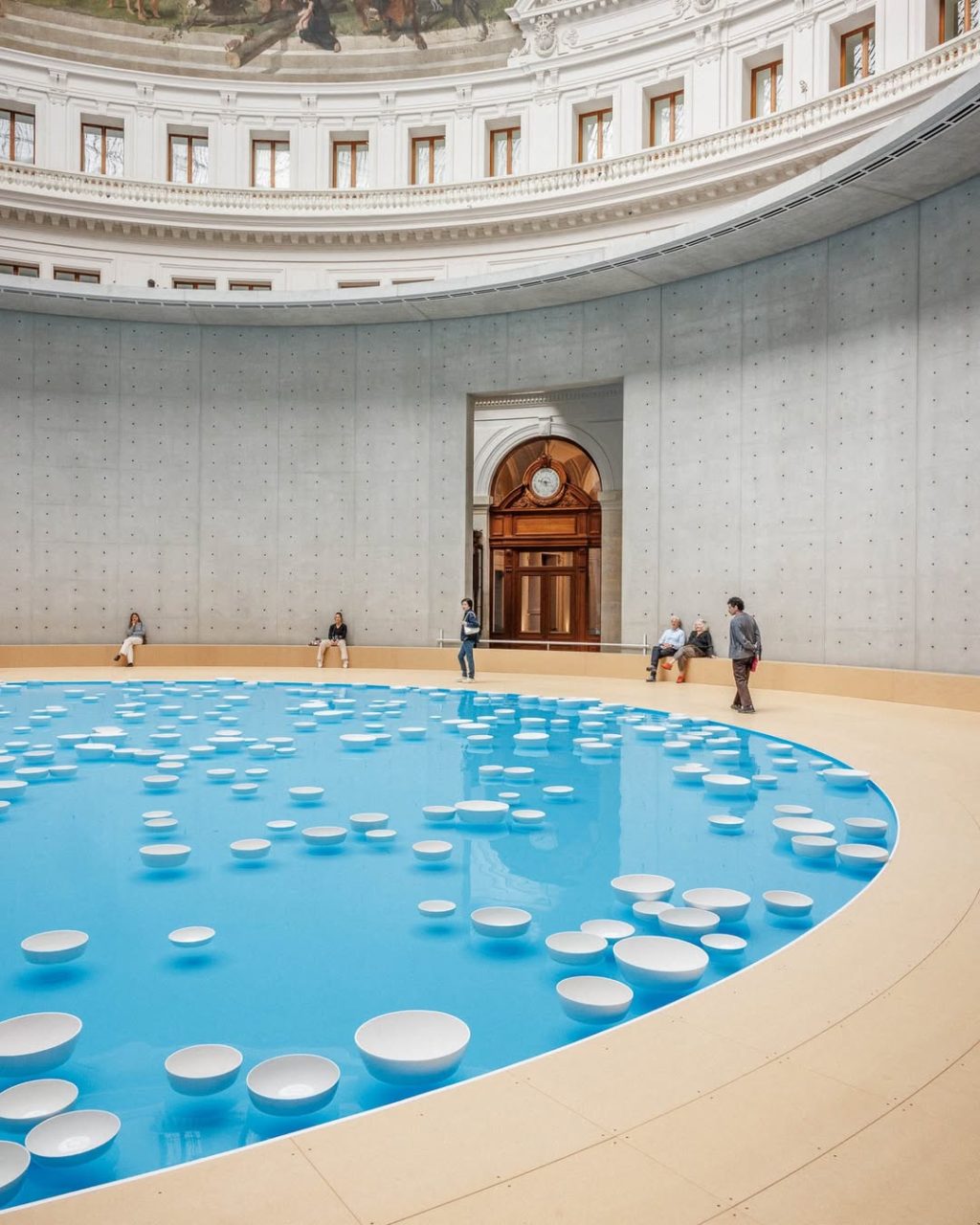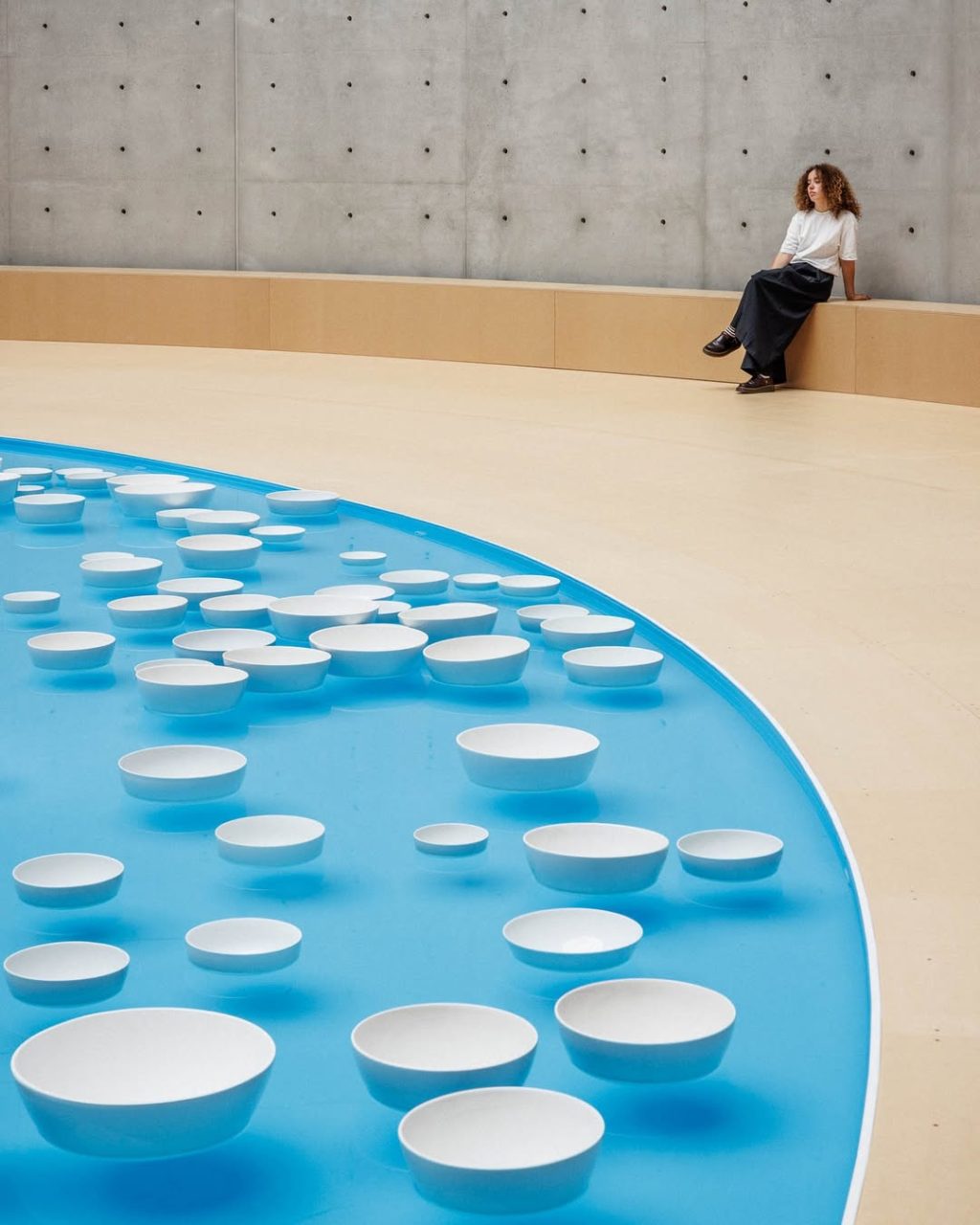When Porcelain Sings: The Cosmic Score of Céleste Boursier-Mougenot
Words float. Sounds ripple. In a deep-blue pool somewhere between sculpture and symphony, white porcelain bowls compose a music that no composer ever wrote — and no audience can ever predict.
In clinamen, French artist and composer Céleste Boursier-Mougenot invites us into a space where silence is never quite silent, and movement is music. Presented in various iterations since 2013 — most recently at Bourse de Commerce in Paris — this aquatic installation transforms exhibition architecture into an ephemeral orchestra pit. More than a hundred white porcelain bowls, adrift in a pool of vibrant blue, moved by invisible currents and guided only by the laws of nature… and chance.
Each collision between bowls emits a chime — delicate, unpredictable, percussive. A ripple becomes a rhythm. A drift becomes a score. The work is titled after the Epicurean concept of “clinamen”: the unpredictable swerve of atoms, a deviation that allows for creation and spontaneity in a universe otherwise governed by straight lines and gravity.

The installation blurs the boundary between the listener and the work. The viewer isn’t just an observer — they are immersed, enfolded, implicated. From the edge of the pool or a quiet corner of the gallery, one doesn’t simply watch — one tunes in.
In Boursier-Mougenot’s world, the artist is no longer a conductor. He becomes a listener, too.
This spatial music — never fixed, always flowing — transforms sound into something architectural. It unfolds in real time, drawing on what the artist calls “the complexity of life.” Just as no two waves collide in the same way, no two performances of clinamen are ever alike. Stillness and unpredictability, form and formlessness, nature and artifice swirl into one another.


And there is a kind of sublime irony in the installation’s materials. Porcelain — known for its refinement, fragility, and permanence — is here set adrift. In constant motion. Never static. Its hardness becomes softness. Its status as object dissolves into atmosphere.
The visual is inseparable from the aural. White bowls against celestial blue form planetary constellations. What we hear, we also see: collisions become notes; movement becomes a score. As bowls drift and meet, the pool becomes a sort of visual music sheet — or perhaps a floating haiku that rewrites itself with each breath of the gallery air.
Like his earlier piece From Hear to Ear — a living installation where zebra finches generate music by landing on electric guitars — clinamen sits in that uncanny zone between spontaneity and system, chaos and ritual. It’s not performance, not precisely sculpture, not quite sound art. It’s all and none of those things.

Perhaps that’s what makes it so moving.
There’s no finale. No crescendo. No applause. Only a slow unfolding — a hum, a chime, a stillness interrupted by another gentle crash of bowl against bowl. A kind of cosmic music box where chance conducts the orchestra.